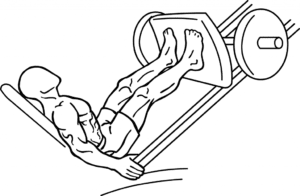 Doing leg-work is exhausting. No, not the kind at the local gym, the leg work we do searching our databases, sending emails, and calling with our operators. It’s what we do to find the perfect air charter or emptyleg flight for our clients. We have touched on many aspects of the private air charter business in our previous blog post articles from buying your own jet to reviews of the most popular categories, models, and hourly charter rates. We also detailed how, if your private air travel needs are below 50 hours per year, private air charter is a better option than fractional ownership. As we look at the weekly, yes weekly, changes to jet charter company membership deals and jet card offers, we find that they really aren’t as much of a cost savings as they are time savers. We know time is money so we can see why, even if they are often not the lowest priced way to fly privately, they can be the most efficient, especially with the larger more reputable firms. While we are an excellent alternate option, we do not market our services as a brokerage firm. We prefer to act as the bona fide agent for our clients seeking private air charter at attractive prices. The definition of the term “bona fide” identifies with us as “sincerely, without intention to deceive”. We charge a modest commission to the operator for helping them move aircraft that they would normally fly without passengers, that is an emptyleg. Unfulfilled, non-revenue emptylegs are flights the operator would otherwise absorb as a cost or pass that cost on to the customer flying a revenue leg. Finding customers for emptylegs isn’t an easy task because it is a very competitive business and the amount of work needed to find the perfect solution for a client can take days, weeks, and even months to put together. A bona fide agent like us really has to love what they are doing because sometimes our very hard efforts are rewarded with “that’s too expensive” or “I booked something else,” leaving us unpaid for our efforts. Fortunately, loyal clientele builds quickly if you get a reputation for making things happen and offering great value for client’s flights needs. Let’s take a peek into the process and why we can be such an asset to anyone that flies private.
Doing leg-work is exhausting. No, not the kind at the local gym, the leg work we do searching our databases, sending emails, and calling with our operators. It’s what we do to find the perfect air charter or emptyleg flight for our clients. We have touched on many aspects of the private air charter business in our previous blog post articles from buying your own jet to reviews of the most popular categories, models, and hourly charter rates. We also detailed how, if your private air travel needs are below 50 hours per year, private air charter is a better option than fractional ownership. As we look at the weekly, yes weekly, changes to jet charter company membership deals and jet card offers, we find that they really aren’t as much of a cost savings as they are time savers. We know time is money so we can see why, even if they are often not the lowest priced way to fly privately, they can be the most efficient, especially with the larger more reputable firms. While we are an excellent alternate option, we do not market our services as a brokerage firm. We prefer to act as the bona fide agent for our clients seeking private air charter at attractive prices. The definition of the term “bona fide” identifies with us as “sincerely, without intention to deceive”. We charge a modest commission to the operator for helping them move aircraft that they would normally fly without passengers, that is an emptyleg. Unfulfilled, non-revenue emptylegs are flights the operator would otherwise absorb as a cost or pass that cost on to the customer flying a revenue leg. Finding customers for emptylegs isn’t an easy task because it is a very competitive business and the amount of work needed to find the perfect solution for a client can take days, weeks, and even months to put together. A bona fide agent like us really has to love what they are doing because sometimes our very hard efforts are rewarded with “that’s too expensive” or “I booked something else,” leaving us unpaid for our efforts. Fortunately, loyal clientele builds quickly if you get a reputation for making things happen and offering great value for client’s flights needs. Let’s take a peek into the process and why we can be such an asset to anyone that flies private.
Operators
Air charter operators are a very diverse group. Some operators are so busy that you can consider yourself lucky to get a call back or reply to an air charter request. They can’t be blamed for this because their flight departments are usually very complex with limited staff who can’t waste time providing quotes to every broker looking for a flight for a client that thinks it will cost just a little more than flying First Class. Of course we know a First Class ticket is nowhere near the price of a private jet charter. Even if you go with an operator that offers flights by the seat, they are considerably higher than a First Class ticket. Only if the flight is a normalized route like NY to Miami that they are trying to fill daily, will these flights get in the range of a First Class ticket. So when a broker or a company like ours reaches out, it’s your reputation for having the clientele that gets the return call. We maintain extensive databases of all our operators. We know where they fly, what they fly, and how often. We know their strengths and weaknesses. Calling a California based operator for that Miami to NY request will not be prudent, as many operators have a preference for their routes. Yes, some fly anywhere and everywhere, but that’s a smaller group, and tend to be more expensive at quote time. You have to have a game plan to match the client to the operator. Many brokers pay large monthly membership fees to companies that organize this data for them, but like with anything else, you get what you pay for. I find that these services tend to give preference to the operator that pays for the “enhanced” listing, so when you search they come up first regardless of if that flight is in their wheelhouse. We prefer to work our own database of operators. They don’t have to sign any agreement with us or give us exclusive pricing. Each flight stands on its own merit. If we can find an operator motivated to move a jet or even a turbo prop in the path our client needs to fly, the good pricing speaks for itself. This doesn’t happen overnight as these relationships are nurtured over time and it’s a never ending process. However, it does take a lot of leg work, something we are happy to do on behalf of our consistent clients. Now lets take a look at this private flyer.
Private Flyers
There is a saying in the business, “Jet Money”, and I hate this terminology. It basically means that only certain people have the type of money to fly private. Anyone with need and desire can figure a way to fly private. I remember the first time I took a call from a very nice gentleman who was looking for regular flights from the west coast of Florida to Texas for medical treatments. He didn’t need ambulatory flights, he just hated flying commercial. The client was wheelchair bound and had to be lifted from the chair into the First Class seat he would purchase on the commercial plane. He explained to me it could be a great experience, but more often it was humiliating and done with no concern for his dignity. I fully understood, and knew that even though he had the financial means to pay for the private flight, we would have to find the right plane, and more importantly, the right crew. It took time, and a little trial and error, but we finally found the nice client an operator that was happy to accommodate his needs. I wouldn’t define this person as having “Jet Money” as much as I would call him a human being needing our help.
Since Covid-19 flying private will never be the same nor will flying commercial, it was a game changer for both areas of the industry. It has created a new category of private fliers that will find a way to fly private just to not have deal with the commercial airlines. The heavy layoffs and early retirements set back the commercial industry in a way no one could have expected. Although crew shortages are a problem, the prevailing problem I see is that some airlines failed to invest in the operations IT. Some systems are personnel intensive when it comes to scheduling and tracking crew, luggage, resources, maintenance, and the like. They have not automated enough to adequately deal with delays or weather issues. This is why the commercial airline systems keep collapsing. Just this past holiday Southwest airlines imploded mainly due to antiquated IT software with little or no AI. The airlines need to focus on operations personnel and systems. Just ask yourself, why are they still printing tickets, or why don’t they have iPhone like air tags for luggage. With all the technology available, it has to do with upper management focused solely on profitability and shareholders coupled with a lack of willingness to invest in systems.
The point is you don’t have to be a millionaire to fly private. There are great deals out there if you have someone in your court like us looking for them on a regular basis. There are times when it’s a no brainer to hop on an empty and other times where it makes perfect sense to fly commercial.
We are only scratching the surface of what we do and how we fit within the air charter market in this article. We are willing to do the leg work that you as our client shouldn’t have to do. When we’re looking for a flight for a client, we often say to each other, how in the world would our client have found this solution on their own or through a flight membership program. The answer is they wouldn’t. Often the specific flight doesn’t exist, but by seeing all the pieces we can help figure out the right pieces to the puzzle and create that flight. It takes the right team to put these together and that’s what makes us special. Next week we will take a peak at the upcoming hot travel for Q1 and especially for the big sporting events, holiday fun, and the Miami International Boat Show.
Until then, Be Social, Fly Private! Join Now Follow us on Facebook Follow us on Instagram

 There’s a point where only the biggest will do, and going from that Gulfstream G5 to the Bizliner category of private jets, your mom must be really proud. Typical Bizliner customers include Heads of State, royalty, celebrities, top executives, Fortune 100 companies, and the like. These mega jets occupy the same ground space as many large-cabin business jets, but the the Boeing Business Jet 737Max, the Global 7500, and the Airbus ACJ319 take private air travel to another world. Many of these wide body behemoths have full bedrooms, seating for the entire executive staff, and the comfort of the most luxurious hotels. They are ideal for people who need to maximize their time and control their environment to their personal exacting standards. We will look first at the Jet that originated the Bizliner terminology, the BBJ, Boeing Business Jet.
There’s a point where only the biggest will do, and going from that Gulfstream G5 to the Bizliner category of private jets, your mom must be really proud. Typical Bizliner customers include Heads of State, royalty, celebrities, top executives, Fortune 100 companies, and the like. These mega jets occupy the same ground space as many large-cabin business jets, but the the Boeing Business Jet 737Max, the Global 7500, and the Airbus ACJ319 take private air travel to another world. Many of these wide body behemoths have full bedrooms, seating for the entire executive staff, and the comfort of the most luxurious hotels. They are ideal for people who need to maximize their time and control their environment to their personal exacting standards. We will look first at the Jet that originated the Bizliner terminology, the BBJ, Boeing Business Jet.
 The Global 7500 is an industry flagship. It has a long range near 7,700 nm and a max speed of Mach 0.925 with 19 passengers. The ride is ultra smooth achieved via the Smooth Flex Wing technology that was engineered to give maximum control and agility at all speeds. The cabin space is gigantic and it can be designed to have four true living spaces with an available Master suite as well as a dedicated crew suite and kitchen. The cabin air is filtered by Bombardier’s Pur Air HEPA filtration system capturing 99.99% of allergens, bacteria, and viruses. Large and evenly spaced windows give the cabin more natural light than any other cabin in business aviation. The Soleil lighting system is aviation’s first circadian rhythm-based cabin lighting designed to combat jet lag. In the cockpit, the 7500 features advanced fly-by-wire technology and a permanent side-facing jump seat. It is powered by GE Passport Engines designed specifically for the Global 7500. The 7500 is happiest playing in the troposphere with an initial cruise altitude of 43,000 ft and a max operating altitude of 51,000 ft. The interior cabin volume is 2,786 cu ft with a height of 6.2 ft and interior width of 8 feet. To charter a Global 7500 you will start around $15,900* USD per hour to as high as $20,000*USD per hour.
The Global 7500 is an industry flagship. It has a long range near 7,700 nm and a max speed of Mach 0.925 with 19 passengers. The ride is ultra smooth achieved via the Smooth Flex Wing technology that was engineered to give maximum control and agility at all speeds. The cabin space is gigantic and it can be designed to have four true living spaces with an available Master suite as well as a dedicated crew suite and kitchen. The cabin air is filtered by Bombardier’s Pur Air HEPA filtration system capturing 99.99% of allergens, bacteria, and viruses. Large and evenly spaced windows give the cabin more natural light than any other cabin in business aviation. The Soleil lighting system is aviation’s first circadian rhythm-based cabin lighting designed to combat jet lag. In the cockpit, the 7500 features advanced fly-by-wire technology and a permanent side-facing jump seat. It is powered by GE Passport Engines designed specifically for the Global 7500. The 7500 is happiest playing in the troposphere with an initial cruise altitude of 43,000 ft and a max operating altitude of 51,000 ft. The interior cabin volume is 2,786 cu ft with a height of 6.2 ft and interior width of 8 feet. To charter a Global 7500 you will start around $15,900* USD per hour to as high as $20,000*USD per hour.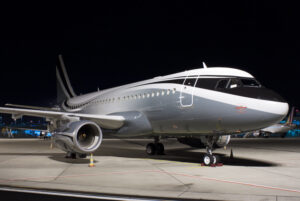
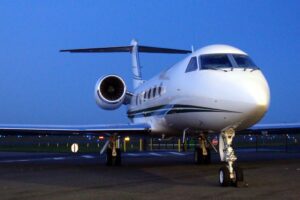
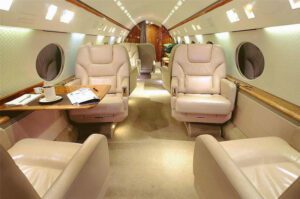
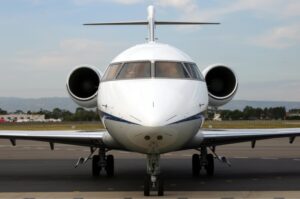
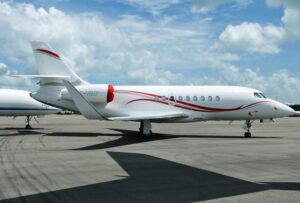
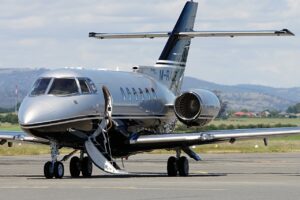
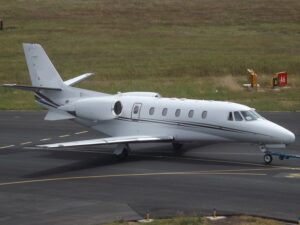
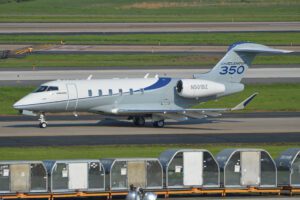
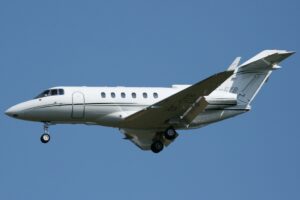
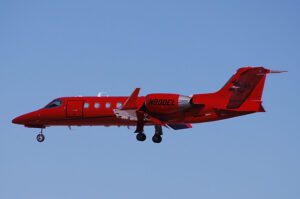
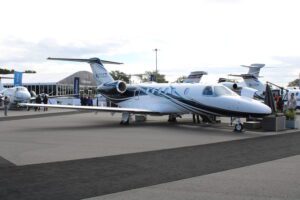
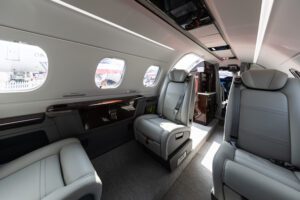
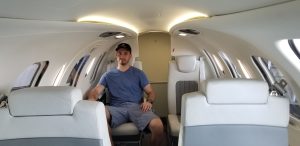 Size matters when its a private jet charter. Luckily there are a lot of jet sizes to choose from when it comes to selecting your charter. They start in the category of very light jet all the way to a Boeing Business Jet that is the size of a commercial airliner. Today we will take a look at the entry level of the 4 categories in the air charter world, the very light jets. Since there are many in this category, we will discuss 3 of the hotter very light jets. It really comes down to what the mission is and how many people will be aboard. It also can have a lot to do with who will be flying. Sometimes the CEO will need his or her own space away from the travel group, and then only certain jets will do. Or the trip is for a large group and the seating capacity will be the main priority. Cargo space may be a deciding factor for a golfing weekend or a fashionista with an entourage of luggage. There are also various cruise speeds and the range flown without a fuel stop to consider. All in all, the process of choosing the right jet for a charter can be simple or at times very complex, especially on a multi-leg tour. Let’s look at the Very Lights this week.
Size matters when its a private jet charter. Luckily there are a lot of jet sizes to choose from when it comes to selecting your charter. They start in the category of very light jet all the way to a Boeing Business Jet that is the size of a commercial airliner. Today we will take a look at the entry level of the 4 categories in the air charter world, the very light jets. Since there are many in this category, we will discuss 3 of the hotter very light jets. It really comes down to what the mission is and how many people will be aboard. It also can have a lot to do with who will be flying. Sometimes the CEO will need his or her own space away from the travel group, and then only certain jets will do. Or the trip is for a large group and the seating capacity will be the main priority. Cargo space may be a deciding factor for a golfing weekend or a fashionista with an entourage of luggage. There are also various cruise speeds and the range flown without a fuel stop to consider. All in all, the process of choosing the right jet for a charter can be simple or at times very complex, especially on a multi-leg tour. Let’s look at the Very Lights this week.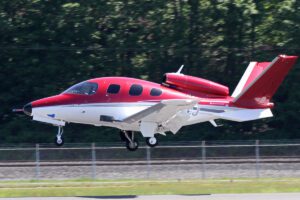
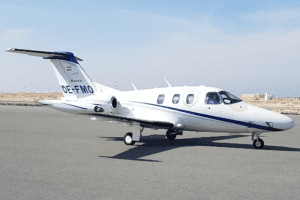
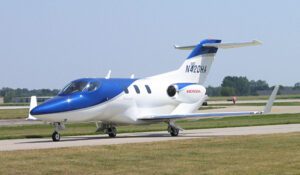
 The 50 hour guideline for flying private.
The 50 hour guideline for flying private.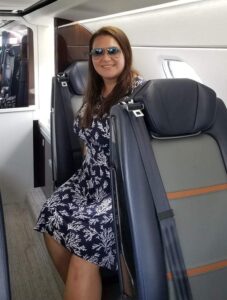 Private air charter has many challenges ahead. Pictured above is one of our Managing Partners, Katherine Koch, my darling wife and future commercial ATP pilot. Unfortunately she only represents a small number of future commercial pilots headed towards the private air charter industry or a major commercial airlines. The pilot shortage is private aviation’s number one challenge, further exacerbated by competition for pilots from airline and freight operations. The airlines are offering huge sign-on bonuses, great work schedules, amazing benefits packages, and lofty annual salaries particularly for anyone experienced enough to graduate to the left seat of these jets. After forcing early retirements during the pandemic, the majors are desperately playing catch-up in this highly competitive industry. Upward mobility was already accelerated before the pandemic but now in the aftermath pilots are upgrading at minimums and jumping from regional to major airlines with unprecedented speed. There is a huge presence in aviation schools by most of the regional airlines that feed these major carriers, something we are not seeing enough of by the private air charter industry. It is a major challenge among many others we will discuss further in this article. In this article, we will take a quick look back 5 years ago at the challenges to private air charter that have shaped the current industry. In next week’s post, we will take a deeper dive into the current private air charter industry.
Private air charter has many challenges ahead. Pictured above is one of our Managing Partners, Katherine Koch, my darling wife and future commercial ATP pilot. Unfortunately she only represents a small number of future commercial pilots headed towards the private air charter industry or a major commercial airlines. The pilot shortage is private aviation’s number one challenge, further exacerbated by competition for pilots from airline and freight operations. The airlines are offering huge sign-on bonuses, great work schedules, amazing benefits packages, and lofty annual salaries particularly for anyone experienced enough to graduate to the left seat of these jets. After forcing early retirements during the pandemic, the majors are desperately playing catch-up in this highly competitive industry. Upward mobility was already accelerated before the pandemic but now in the aftermath pilots are upgrading at minimums and jumping from regional to major airlines with unprecedented speed. There is a huge presence in aviation schools by most of the regional airlines that feed these major carriers, something we are not seeing enough of by the private air charter industry. It is a major challenge among many others we will discuss further in this article. In this article, we will take a quick look back 5 years ago at the challenges to private air charter that have shaped the current industry. In next week’s post, we will take a deeper dive into the current private air charter industry.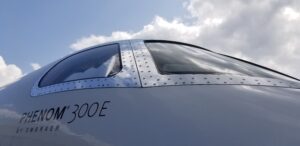
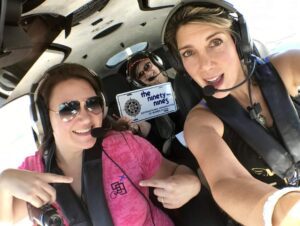 I think I should buy my own jet is a statement I hear often from many of our newly referred clients. Owning your own private jet or even a prop plane is a big endeavor for any person or business. Let’s look at the beginning for people interested in actually owning and flying their own plane or jet.
I think I should buy my own jet is a statement I hear often from many of our newly referred clients. Owning your own private jet or even a prop plane is a big endeavor for any person or business. Let’s look at the beginning for people interested in actually owning and flying their own plane or jet.